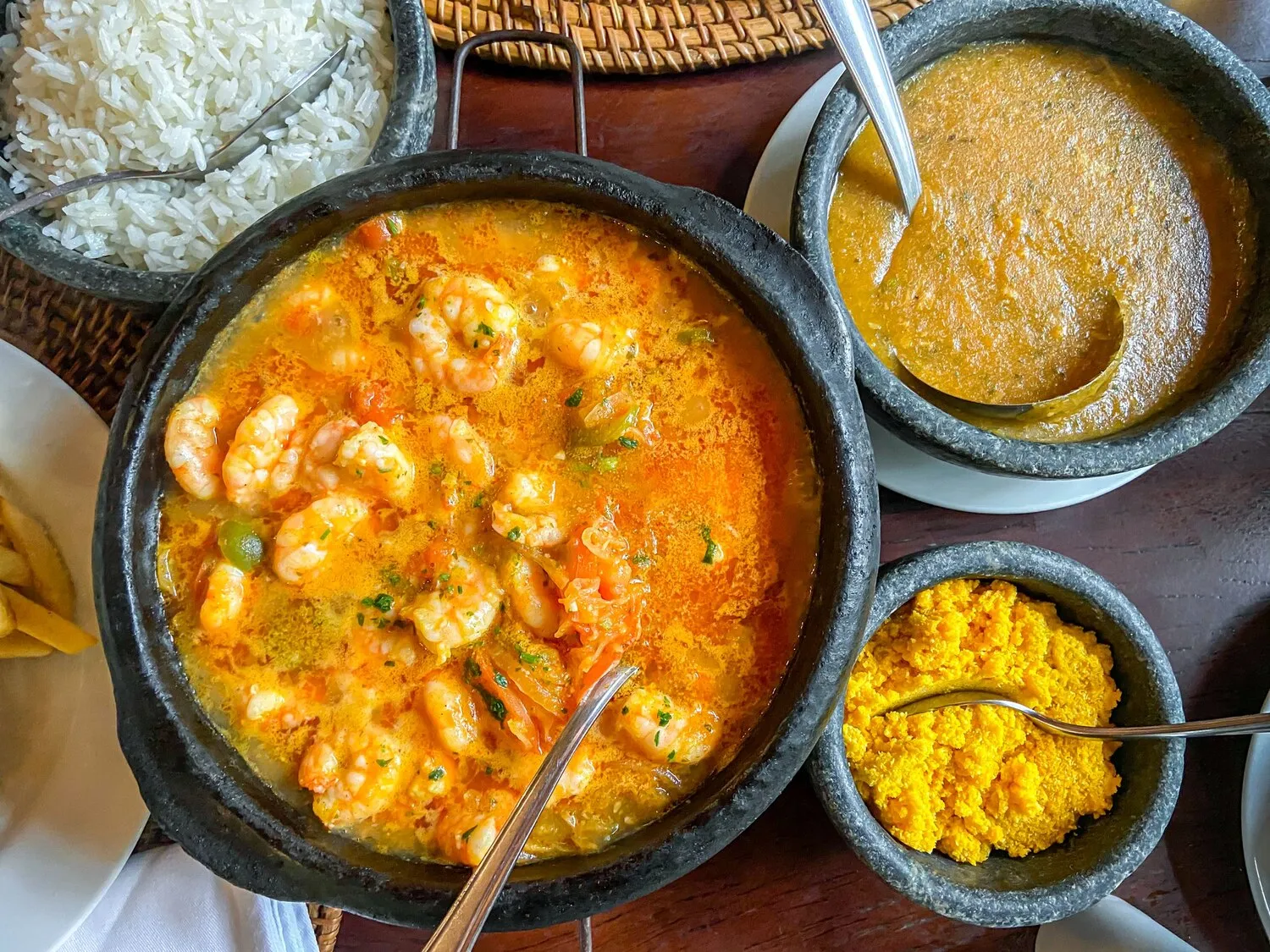
Moqueca Capixaba
A traditional Brazilian seafood stew, often prepared with fish, shrimp, or a combination, cooked in a clay pot with tomatoes, onions, garlic, and cilantro.
Nutrition Facts
* The % Daily Value (DV) tells you how much a nutrient in a serving of food contributes to a daily diet. 2,000 calories a day is used for general nutrition advice.
Lagostão
Moqueca Capixaba reflects the indigenous and African influences on Brazilian cuisine, particularly in the state of Espírito Santo. Indigenous techniques of slow-cooking seafood with local produce were blended with ingredients introduced by African slaves, resulting in a unique and flavorful stew. The absence of dendê oil (palm oil) distinguishes it from its Bahian counterpart, Moqueca Baiana.
Moqueca Capixaba is deeply intertwined with the culture of Espírito Santo, representing the region's coastal heritage and culinary traditions. It is often enjoyed during family gatherings and celebrations, symbolizing hospitality and shared meals.
Regional Identity
Moqueca Capixaba is a symbol of Espírito Santo's distinct culinary identity, differentiating it from other regions of Brazil and particularly from Bahia, which has its own version of Moqueca.
Family Traditions
The preparation of Moqueca Capixaba is often a family affair, with recipes passed down through generations. It represents a connection to ancestors and shared culinary heritage.
Celebratory Dish
Moqueca Capixaba is frequently served during special occasions and celebrations, showcasing the region's bounty of seafood and agricultural products.
Moqueca Capixaba boasts a fresh and savory flavor profile, characterized by the delicate sweetness of seafood complemented by the bright acidity of tomatoes and the aromatic essence of herbs.
The primary flavor comes from the fresh seafood, typically fish (like grouper, sea bass, or swordfish) and/or shrimp. Tomatoes contribute a sweet and acidic base, while onions and garlic provide savory depth. Cilantro adds a fresh, herbaceous note. Annatto seeds (urucum) impart a subtle earthy flavor and a beautiful reddish color. The absence of dendê oil results in a lighter, brighter flavor compared to Moqueca Baiana. Bell peppers may also be used, adding a subtle sweetness and vegetal note.
Freshness is Key
Use the freshest seafood available. The quality of the fish and shrimp will significantly impact the final flavor of the dish.
Clay Pot Matters
Traditionally, Moqueca is cooked in a clay pot, which imparts a unique flavor and helps to distribute heat evenly. If a clay pot is unavailable, a heavy-bottomed pot can be used as a substitute.
Low and Slow
Cook the Moqueca over low heat to allow the flavors to meld together and prevent the seafood from becoming overcooked and tough.
Don't Stir Too Much
Avoid stirring the Moqueca excessively, as this can break up the fish and make the stew cloudy. Gently shake the pot occasionally to prevent sticking.
Annatto Seeds (Urucum)
If you don't find annatto seeds, paprika can be used in small quantity as a substitute for color. Be mindful to not add a lot, or it will change the taste of the dish.
Explore additional Stew dishes and restaurants
Explore StewDiscover top dining spots and culinary experiences in Macaé.
Explore MacaéLearn more about the food culture, restaurant scene, and culinary heritage of Brazil.
Explore Brazil